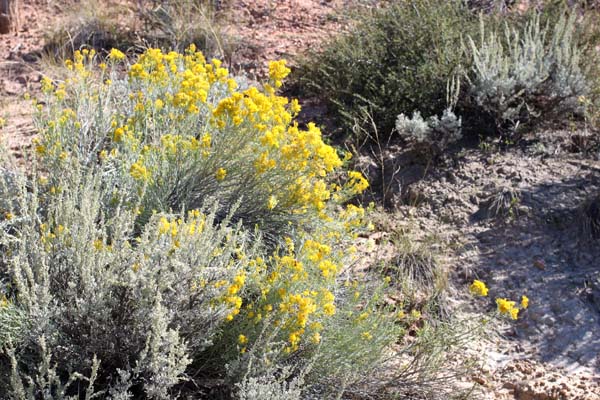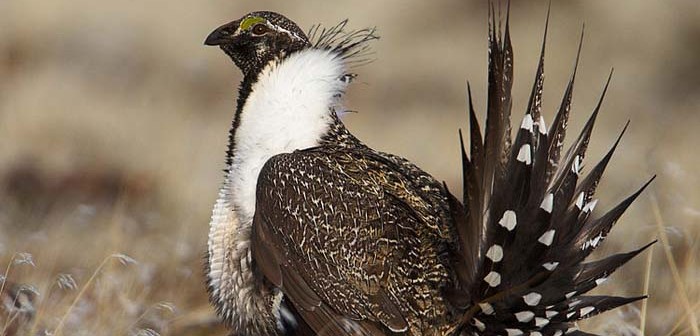Continued from How long will the sage grouse dance? part one and part two.
One of the worst aspects of coal mining activity would be the excessive levels of noise that would bombard this quiet, remote area – causing life-threatening stress to the Sage Grouse and other birds. Any licensed wildlife rehabilitator will confirm that birds die easily from stress and from loud sounds. High noise levels would impact breeding as well. The Sage Grouse mating dance includes the distinctive sounds that the male makes to attract females. These sounds would be obliterated by the deafening blast of heavy machinery, prohibiting breeding and the raising of their young.
Unrealistic alternatives
Alternatives have been proposed to try to attenuate the tragic effects of strip mining in this pristine wild area, such as modifying strip mining activity during certain hours or times of year. These all fall far short of addressing the real problems, and it is quite fanciful to imagine that Sage Grouse will be able to continue to live and breed next to an active, noisy industrial site such as a strip mining operation. Sage Grouse and strip mining cannot co-exist on the same land.
Soil recovery may take hundreds of years
 The lease application lays out a plan to strip mine 2,280 acres of public land (as well as additional private land) for 25 years. After this 25 years, it is stated that the area would be restored and back to normal within the next 15-20 years. Even if this were true, which it isn’t, a minimum of forty years is a long time – especially given the state of today’s world. Most of us would not likely live to see this promised return to normality. The Sage Grouse population living there (a federally protected species), would, in any eventuality, be long gone.
The lease application lays out a plan to strip mine 2,280 acres of public land (as well as additional private land) for 25 years. After this 25 years, it is stated that the area would be restored and back to normal within the next 15-20 years. Even if this were true, which it isn’t, a minimum of forty years is a long time – especially given the state of today’s world. Most of us would not likely live to see this promised return to normality. The Sage Grouse population living there (a federally protected species), would, in any eventuality, be long gone.
Several hundred years (the time estimated in the WildEarth Guardian Comments) for the soil crust to reform in this arid region is quite different from the optimistic time frame given of 15-20 years for full restoration, after the strip mining has ended.
Given the prospect of climate change – in fact, even without taking into account climate change – with just the ever-accelerating pace of human activity and the accompanying disappearance of natural wild land, it can be predicted that this land would almost certainly never be restored to the peaceful and beautiful countryside that the Sage Grouse and the other birds and animals now know as their home. The peace of this land would also be lost to human beings living on local ranches or nearby towns.
Allowing strip mining on designated Sage Grouse land is absolutely incompatible with protecting this beautiful, iconic species, as well as all the other plants and animals that belong on this land.
The value of Southern Utah’s canyonlands
 One of the most beautiful areas in Utah, this land lies just south of Bryce Canyon National Park; not so far away are Zion National Park, Escalante National Monument, and numerous other unique and majestic canyonlands. Visitors travel from all over the globe to experience these wild lands of singular beauty, which are found no where else in the world.
One of the most beautiful areas in Utah, this land lies just south of Bryce Canyon National Park; not so far away are Zion National Park, Escalante National Monument, and numerous other unique and majestic canyonlands. Visitors travel from all over the globe to experience these wild lands of singular beauty, which are found no where else in the world.
Kane County is among the earth’s most strikingly beautiful, tranquil, and majestic regions. To sacrifice any part of this land diminishes it and opens the door to further degradation in the future by oil, gas, or coal interests. Desecrating the unique character of this land, and the plants and gentle wild birds and animals who live there, is wrong by any measure.
This area of southern Utah – a beacon of inspiring natural beauty, is much loved by tourists and visitors, as well as by Utah residents. All this, as well as the very significant economic benefit to local people from tourism, is threatened by this entirely misguided plan – which benefits no one – neither human, animal, bird, nor even the plants and the trees – only the few who are invested in coal.
Top photo: Pacific Southwest Region U.S. Fish and Wildlife Service from Sacramento, US / Wikimedia Commons / This file is licensed under the Creative Commons Attribution 2.0 Generic license. / A male sage grouse.
Second photo: Sharon St Joan / Sagebrush, near where the sage grouse lek is located in southern Utah.
Third photo: Sharon St Joan / Globe mallow, a wildflower common in southern Utah.
How you can help
To call on the Bureau of Land Management to reject this expansion of the Alton Coal Mine, please sign this petition.
For more information, please visit
The WildEarth Guardian website
The video, Dance for Survival, by the Wild Utah Project





